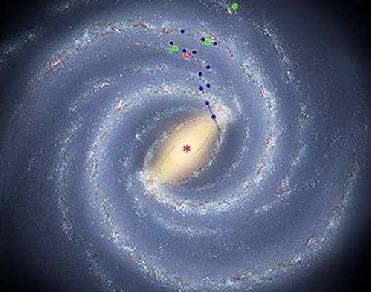
We've known for a long time that there is dust in galaxies – we just didn't appreciate the extent of its influence.” Dr Alister Graham. Swinburne University of Technology
SYDNEY (BNS): In a decade-long study of some 10,000 galaxies, astronomers have discovered that the Universe is twice as brilliant and fiery a place as than previously imagined.
In a major discovery, published in Astrophysical Journal Letters, an international team of astrophysicists have established that there is double the amount of light in the Universe, and half of it is masked by clouds of interstellar dust.
Swinburne University of Technology astrophysicist Dr Alister Graham said that it has been known for a long time that there was dust in galaxies but one was not sure about the extent of its influence. �It came as something of a shock � we�ve only been seeing half the show,� Graham said.
�At first we thought that we must have made a mistake. However, we were able to check the result by studying how the light-obscuring dust glowed in the infrared when heated by the starlight. This thermal glow, invisible at optical wavelengths, gave us the confirmation we needed,� Graham said. �It is rather poetic that, in order to appreciate the full glory of the Universe, we first had to appreciate something as small as the particles of dust that obscure it,� he said.
Speaking about the relevance of the discovery, Professor Simon Driver, of University of St Andrews in Scotland, said that the discovery will help astronomers understand the effect of dust. �The dust originates from material blown off by stars, like exhaust fumes, as they mature. Mixed in the wind from these stellar furnaces are particles of silicate and graphite, which build up in galactic clouds and trap the starlight, inhibiting its escape from a galaxy,� he said.
To arrive at the discovery, the team first measured the brightness of a huge population of disc-shaped spiral galaxies with different orientations - face-on, edge-on and in between - to try to work out how much dust they contained. The idea is that galaxies seen face-on will appear brighter because, on an average, there is less dust lying between the stars and the viewer. In contrast, the majority of stars in edge-on galaxies are shaded by dust such that only the facing outer rim of stars is seen.
Making comparisons with a computer-simulated model of a dusty galaxy, the team arrived at a conclusion on how much light was actually escaping from the thousands of different galaxies. The astrophysicists by measuring the infrared glow of the dust itself, which is heated by the absorbed starlight, were also able to confirm how much energy was not escaping in the form of visible light � providing an accurate energy balance for the galaxies and the Universe.
�The survey also enabled us to determine that the Universe contains some 20 per cent more mass in stars than we had previously realised,� Graham said.
Dust changes the colour of a galaxy � making it appear redder. Given that both the brightness and the colour of a galaxy are used to convert its observed stellar flux into a stellar mass, this colour adjustment accounts for why 100 per cent more stars were not reported, even though the galaxies are twice as bright at blue wavelengths, Graham explained.
The team says that although their research indicates that the Universe is more dusty, the total mass of the dust remains relatively tiny (well below one per cent) compared to everything else, and therefore does not cancel out the belief that there is still a great deal of enigmatic �dark matter� in galaxies.
The researchers say that there are billions of distant stars in the disc of the galaxy, the Milky Way that one cannot see because they are obscured by dust as one looks sideways through the dusty galactic plane. The night-time band of light that is the galaxy would indeed be brighter if not for this dust, they added.
 Next Article
Next Article













The Indian Air Force, in its flight trials evaluation report submitted before the Defence Ministry l..
view articleAn insight into the Medium Multi-Role Combat Aircraft competition...
view articleSky enthusiasts can now spot the International Space Station (ISS) commanded by Indian-American astr..
view article